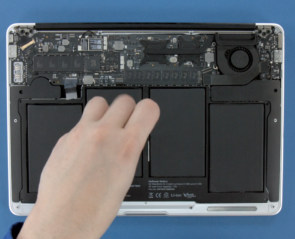Apple USB-C: A Comprehensive Overview and Analysis

Introduction
In recent years, Apple has embraced the USB-C technology, revolutionizing the way we connect and charge our devices. This powerful and versatile connector has become increasingly popular, offering a range of benefits for Apple users. In this article, we will provide an in-depth analysis of Apple USB-C, exploring its various types, popularity, and quantitative measurements. Additionally, we will discuss the differences between different Apple USB-C models, providing a historical overview of their advantages and disadvantages.
Overview of Apple USB-C

Apple USB-C is a type of connector developed by Apple Inc. that offers fast data transfer speeds, charging capabilities, and the ability to connect various accessories to Apple devices. The USB-C port has a reversible design, allowing for easy plug-in regardless of the orientation. This eliminates the frustration of trying to connect a cable the wrong way.
Types and Popularity of Apple USB-C
There are multiple types of Apple USB-C connectors, each designed for specific devices and functionalities. The most common types include USB-C to USB-C, USB-C to Lightning, and USB-C to USB-A.
USB-C to USB-C: This type of connector is commonly used to connect two USB-C compatible devices. It enables fast data transfer speeds and charging between compatible Apple devices, such as MacBook Pro and iPad Pro.
USB-C to Lightning: This type of connector allows for fast charging and data transfer between Apple devices with a Lightning connector, like the iPhone and iPad, and devices with USB-C ports, such as MacBook Pro.
USB-C to USB-A: This connector is used to connect USB-C devices to devices with a USB-A port, commonly found on older computers or peripheral devices such as external hard drives or printers. It enables backward compatibility with older USB standards.
The popularity of Apple USB-C has grown significantly due to its widespread adoption by Apple in its latest devices. The MacBook Pro, iPad Pro, and the latest iPhones all feature USB-C ports, making it a standard connector for charging and connecting peripherals.
Quantitative Measurements of Apple USB-C
Apple USB-C offers impressive quantitative measurements in terms of data transfer speeds and power delivery. USB-C connectors can support up to 10 Gbps data transfer rates, allowing for lightning-fast file transfers and syncing. Additionally, Apple USB-C supports Power Delivery (PD) technology, allowing for fast charging of compatible devices. With the right power adapter, devices can be charged at higher wattages, resulting in quicker charging times.
Differences Between Apple USB-C Models
While Apple USB-C connectors serve similar purposes, there are differences between models that users should be aware of. The main differentiating factor is the maximum power output and data transfer speed supported by each connector. For example, some USB-C to USB-C cables may support higher wattages for fast charging, while others may prioritize data transfer speeds. Users need to choose the appropriate USB-C connector based on their specific needs.
Historical Overview of Advantages and Disadvantages
Apple USB-C has evolved over time, bringing forth advantages and disadvantages. Initially, one of the main advantages of USB-C was its universal nature, allowing for a single cable to connect various devices. However, this universality also came with the challenge of adapters and compatibility with older USB standards. Users had to purchase additional dongles or adapters to connect their existing devices with USB-A ports.
Another advantage of Apple USB-C is its fast charging capability. With Power Delivery technology, Apple devices can be rapidly charged using USB-C power adapters. However, not all USB-C power adapters are created equal, and users need to ensure they use high-quality, genuine products to avoid any potential issues.
Conclusion
Apple USB-C has become an integral part of Apple’s device ecosystem, offering fast data transfer speeds, quick charging, and versatile compatibility. With various types of connectors available, Apple users can enjoy seamless connectivity and enhanced productivity. Understanding the differences between different Apple USB-C models and considering the advantages and disadvantages will empower users to make informed decisions when it comes to choosing and utilizing this powerful technology.
[INSERT VIDEO HERE: A brief demonstration showcasing the versatility of Apple USB-C connectors and their various applications.]
FAQ
What is Apple USB-C?
What types of Apple USB-C connectors are available?
What are the advantages of Apple USB-C?
Fler nyheter
Upptäck världen av casino online: En resa genom spelens universum
Introduction In recent years, Apple has embraced the USB-C technology, revolutionizing the way we connect and charge our devices. This powerful and versatile connector has become increasingly popular, offering a range of benefits for Apple users. In ...
07 februari 2025
Så fungerar Mac-service: En guide till underhåll och reparation
Introduction In recent years, Apple has embraced the USB-C technology, revolutionizing the way we connect and charge our devices. This powerful and versatile connector has become increasingly popular, offering a range of benefits for Apple users. In ...
04 februari 2025
Datorservice i Halmstad: Säkra och effektiva lösningar för dina it-behov
Introduction In recent years, Apple has embraced the USB-C technology, revolutionizing the way we connect and charge our devices. This powerful and versatile connector has become increasingly popular, offering a range of benefits for Apple users. In ...
22 januari 2025
Datorhjälp i Hemmet: En Komplett Guide för Teknikassistans
Introduction In recent years, Apple has embraced the USB-C technology, revolutionizing the way we connect and charge our devices. This powerful and versatile connector has become increasingly popular, offering a range of benefits for Apple users. In ...
14 november 2024











